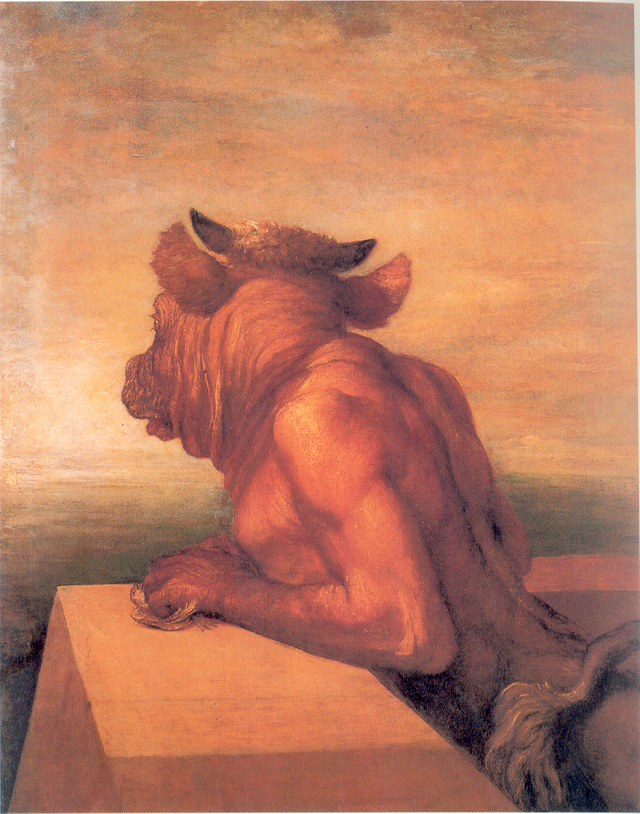I will share in parts an original analysis made on the story of Jorge Luis Borges entitled "The house of Asterion". I hope you enjoy it. The bibliography used to carry out this work can be consulted at the end of this publication.
INTRODUCTION
Jorge Luis Borges (1899-1986) is undoubtedly the most transcendent author that has given the Argentine literature, and one of the most influential and cited in the international arena. Within his vast work prevails a remarkable production of stories belonging to the fantastic narrative in which abound elements and approaches of a metaphysical nature. Such is the genre of the stories that make up the book The Aleph, published in 1949. Borges included there the story "The House of Asterion" (object of study of this work) that had its first appearance two years before in a volume of the "Anales de Buenos Aires" magazine.
In his texts Borges frequently resorts to different metaphors and images with which he seeks to expose the impotence that man feels before a universe that appears indecipherable to him. One of them is the figure of the labyrinth, a space designed to confuse and mislead those who enter it, which Borges usually identifies with the same universe. It is this image that, from the myth of the minotaur (beast with a human body and a bull's head, which was enclosed precisely in a labyrinth), is implanted in "The House of Asterion".
But in Borges the idea of the labyrinth is generally associated, in one way or another, with the notion of infinity; This is because, as was said, what he seeks through this metaphor is to represent the idea of a universe whose understanding is impossible for man, and a labyrinth, however intricate it may be, always offers the possibility of being deciphered if it has achievable limits; not so one that in its definition includes infinity. From this it is further inferred that an infinite labyrinth can only exist as the creation of some supernatural or divine being; no construction made by man can be infinite.
That is why Beatriz Sarlo points out: "The labyrinth of God can´t be grasped by the understanding, even in the case where the existence of a god is supposed (it is worth remembering that Borges was invariably agnostic [...]). Men only understand the labyrinths they build "(Sarlo: 1995, 56).
This work will focus on recognizing the intervention of the notion of infinity in the different dimensions of the story. It will try to elucidate how his treatment appears to interfere, either according to the nominalist conception of the term, or according to the realist one; but always generating the uncertainty of knowing itself before something that escapes human understanding.
For this we begin by making a brief introduction to this concept in philosophical terms and also in mathematical terms, bearing in mind that Borges has shown a deep intellectual interest in both branches and that he has paid special attention to the paradoxes that arise from the different theories that have addressed this issue.
BIBLIOGRAPHY
BOOKS
- APOLODORO (1987) Biblioteca mitológica, Madrid: Akal
- BORGES, Jorge Luis (1995) El Aleph, Madrid: Alianza Editorial
- BORGES, Jorge Luis (1980) Discusión, Madrid: Alianza Editorial
- BORGES, Jorge Luis (1980) Siete noches, Madrid: Alianza Editorial
- PLATÓN (1983) El banquete - Fedón - Fedro, Buenos Aires: Hyspamérica
- REINA-VALERA (1960) La santa biblia, London: Bibles.org.uk
- REST, Jaime (1976) El laberinto del universo (Borges y el pensamiento nominalista), Buenos Aires: Fausto
- SARLO, Beatriz (1995) Borges, un escritor en las orillas, Buenos Aires: Ariel
- VERA FERNÁNDEZ DE CÓRDOBA, Francisco (2000) “Historia de la idea de infinito”, Tres obras inéditas, Badajoz: Montano
JOURNALS
- ANDERSON IMBERT, Enrique (1960) “Un cuento de Borges: «La casa de Asterión»”, Revista iberoamericana, XXV: 33-43
- BRATOSEVICH, Nicolás (1977) “El desplazamiento como metáfora en tres textos de Jorge Luis Borges”, Revista iberoamericana, XLIII: 549-560
- GALLO, Marta (1977) “Asterión, o el divino Narciso”, Revista iberoamericana, XLIII: 683-690
- HERNÁNDEZ, Juan Antonio (2000) “Biografía del infinito: la noción de transfinitud en George Cantor y su presencia en la prosa de Jorge Luis Borges”, Signos literarios y lingüísticos, II.2: 131-139
